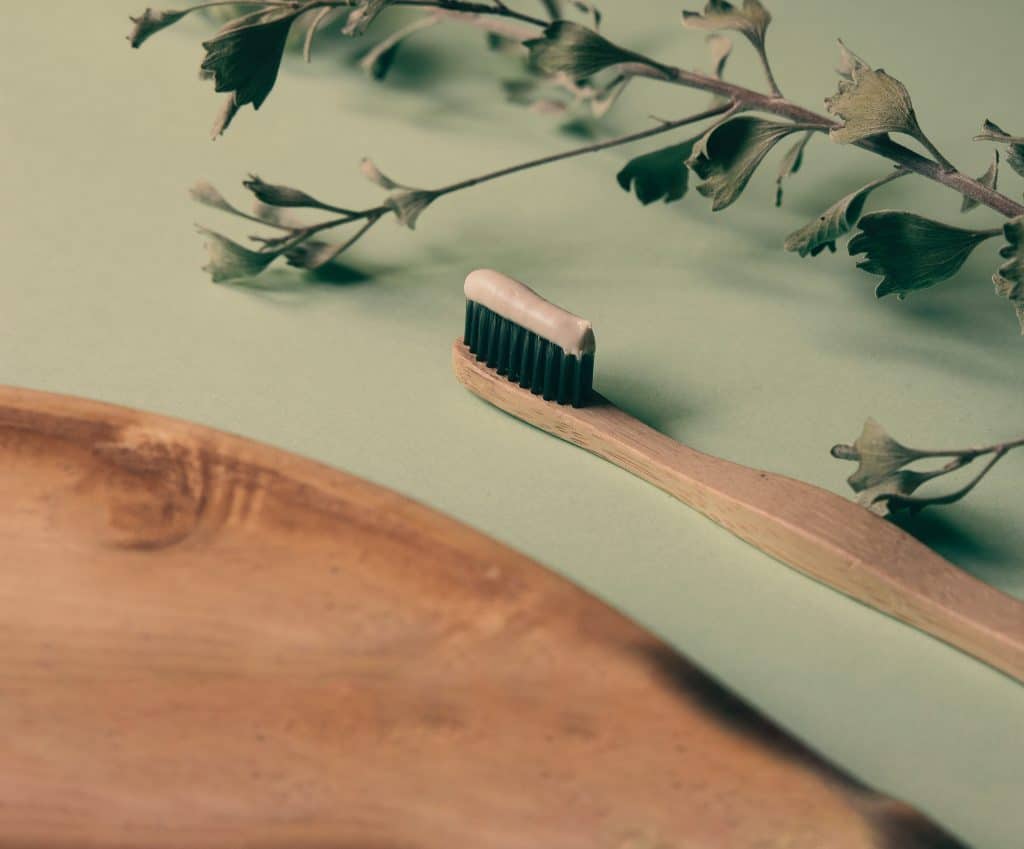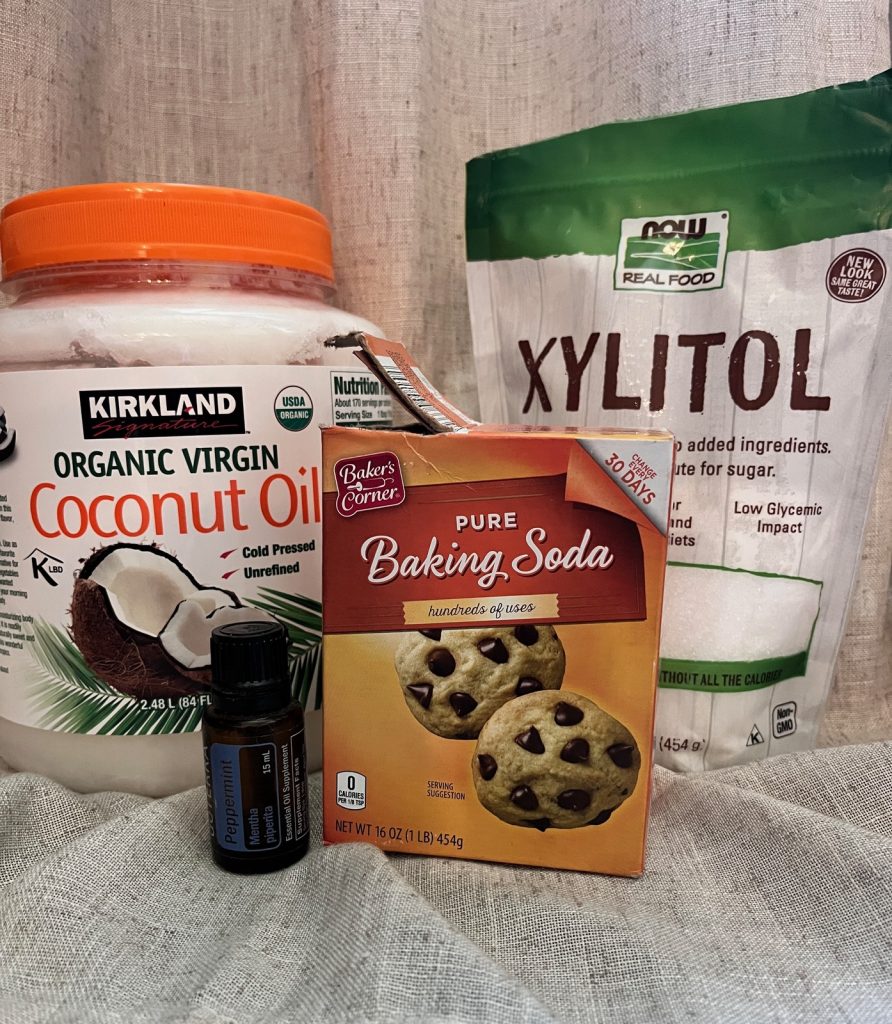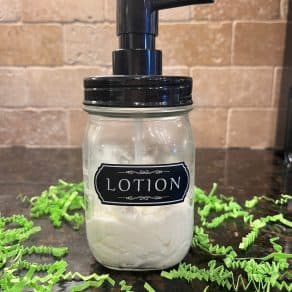Learning how to make your own toothpaste is a great step in your journey of getting rid of chemicals and harmful additives. Many people don’t realize all the harmful ingredients in their personal care products, including toothpaste. Let’s look at why you should learn to make your own.

This site contains affiliate links to products. I may receive a commission for purchases made through these links at no extra cost to you.
Why You Should Make Your Own Toothpaste
You have probably heard by now that what you put on your skin goes directly into your bloodstream. But did you know that the most absorbent tissue on your whole body is your mucous membranes? Mucous membranes line all body cavities that open to the outside. So think eyes, mouth, nose, and vaginal areas. Ladies, this is why we also need to be very careful the type of feminine products we use! But for this discussion, back to the mouth. 🙂 For a product that is used twice a day over a lifetime, and in an area with a high absorption, natural is the only way to go.
Ingredients to Avoid in Commercial Toothpaste
- Flouride: Flouride is a neurotoxin and can accumulate in the body. This poses more of a risk if your family also drinks flouridated water. This is a controversial ingredient because so many dentists recommend it. Many feel it doesn’t pose a threat if applied topically, as opposed to consuming in drinking water. My gut says if anything carries a warning label from the FDA (as do all flouridated toothpaste), it can’t be good for you. The other little known issue is where flouride actually comes from. Don’t be confused and think it’s a natural element because it’s on the periodic table! The type in commercial toothpaste is sodium flouride. This type of flouride is also used as an insecticide and is a by-product of making commercial fertilizer. How handy of them to use even the waste products. Profitable for them, harmful for consumers.
- Triclosan: Triclosan is a pesticide added to many personal care products as an anti-bacterial agent. It was used for years in anti-bacterial soaps but was banned by the FDA in 2016 for this use. Sadly, it wasn’t banned in toothpaste. I sure wouldn’t want to put something in my mouth that was banned on my hands. Not all brands have this ingredient, so check carefully.
- Sodium lauryl sulfate (SLS): SLS is used as a foaming agent in many personal care products. It can cause irritation on skin, and has been linked to canker sores in the mouth. If you’re sensitive to getting mouth sores, you may want to look to this as a possible culprit.
- Saccharin: Saccharin is an artificial sweetener (also used as the brand Sweet N Low) that has been linked to cancer in animal studies. I stay far away from artificial sweeteners of all kinds, including toothpaste.
Natural Brands You can Trust
- Schmidt’s– Free of all the ingredients listed above, and the most affordable of all the natural brands.
- Redmond Earthpaste– Free of all the ingredients above, moderately priced, and uses bentonite clay. Comes in multiple flavors.
- David’s– Free of all the ingredients listed above, a bit more on the expensive side. This one is also a whitening toothpaste.
- Himalaya Botanique– Free of all the ingredients listed above, but does have a much longer ingredient list due to all the flavorings used. They are all natural and look yummy, although I haven’t tried this brand. This one is also moderately priced. They also have three flavors specifically designed for kids that look yummy.
- Most people are more familiar with Toms of Maine, Hello, and Burt’s Bees because they can be found at your local big-box store. If you’re concerned about flouride or SLS, make sure and check your ingredients because these brands can vary based on flavor and type.

Ingredients for Making Your Own Toothpaste
- Coconut oil (or water if you choose to make the water-based recipe)
- Baking soda
- Xylitol
- Your choice of flavors- some ones I like are peppermint oil, clove oil, cinnamon oil, or even a flavored liquid Stevia which are kid-approved on taste.

Two Ways to Make Your Own Toothpaste
- Coconut oil based- Simply blend together 2 parts coconut oil, 1 part baking soda, and 1 part Xylitol. Check out my YouTube video on a secret hack I have for turning the xylitol into powder (note the difference in picture above), which helps with texture. When well-blended, you can add any optional flavorings you desire. Coconut oil based toothpaste stores best in a small container. The texture will vary based on the temperature of your house so it doesn’t work well in any type of squeeze bottle.
- Water based- This one is a bit more kid-friendly if your kids don’t do well with weird textures. The coconut oil can be an adjustment if they aren’t used to that feel in their mouth. Place 1 Tbsp of water in a bowl. You’ll want to start with this step because it can take 3-4 parts baking soda to be the right consistency. To the water, add 1 Tbsp powdered Xylitol (as explained in the video above) then 1 Tbsp at a time of baking soda until you have the consistency you desire. Water based toothpaste stores well in a container but also does great in a squeeze bottle if you would like to have it feel more like a store-bought option. Just don’t make it too thick or it will clog your container!
Whether you choose a natural option you can purchase, or decide to DIY, make the switch from those brands with toxic chemicals for the health of your family!

